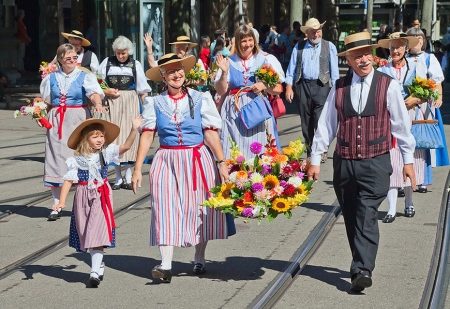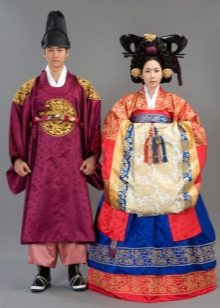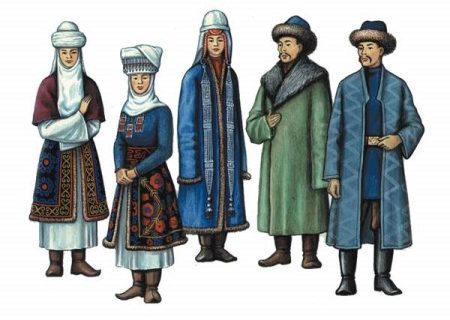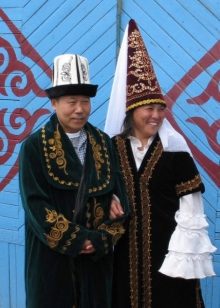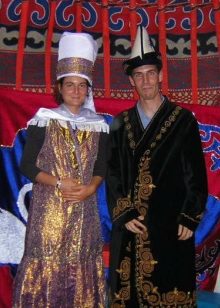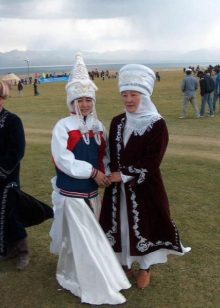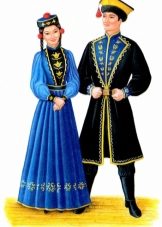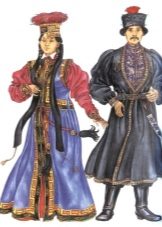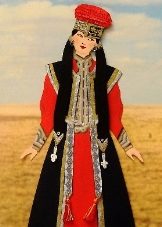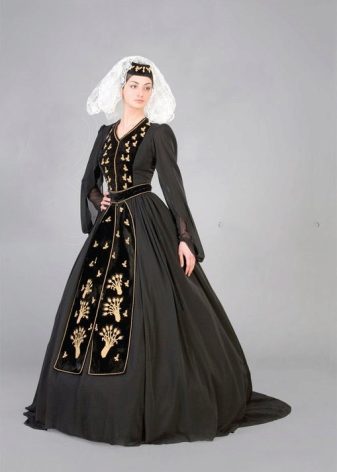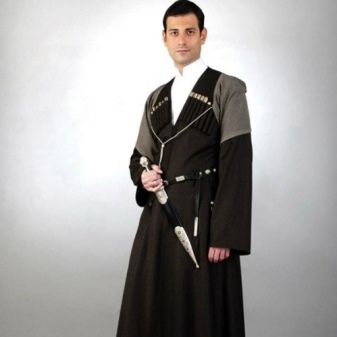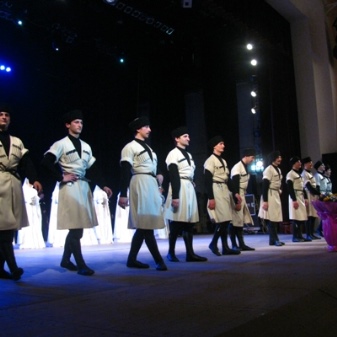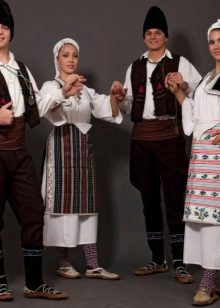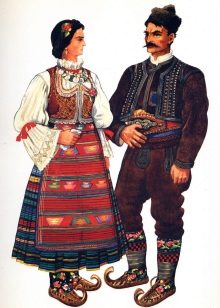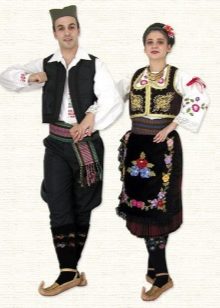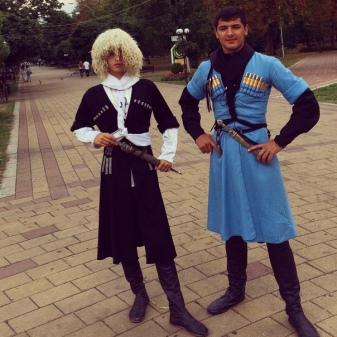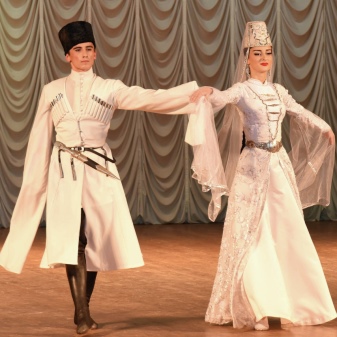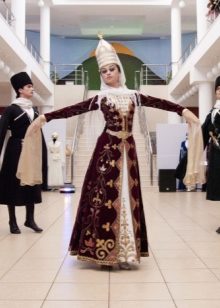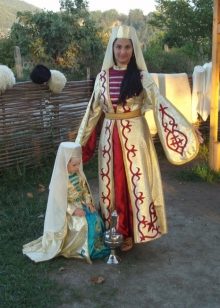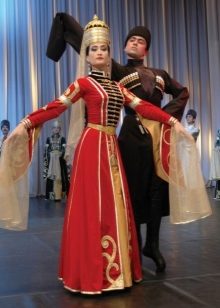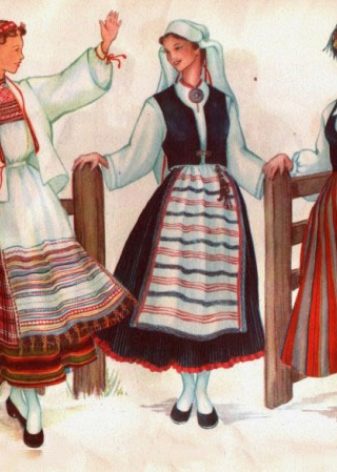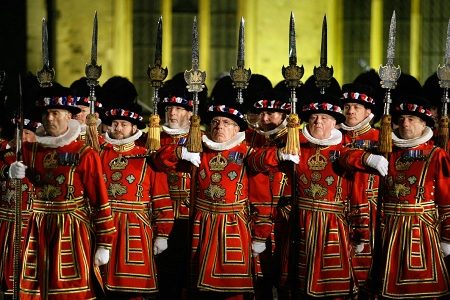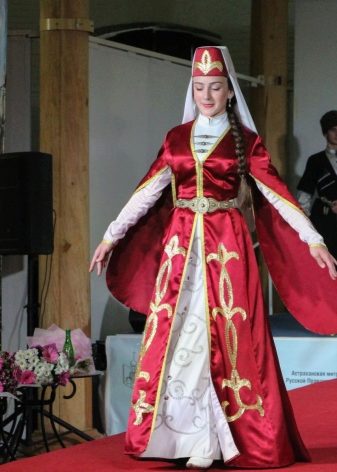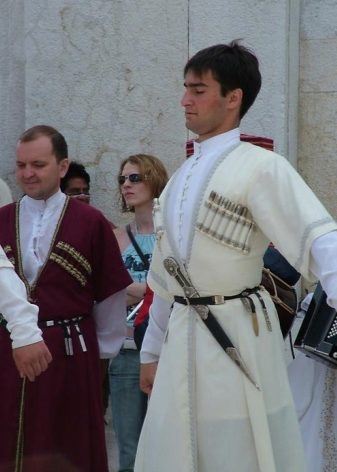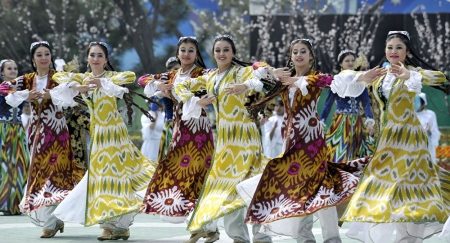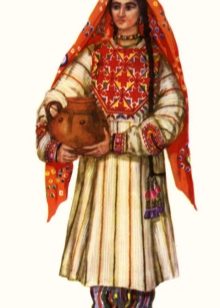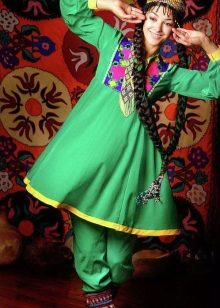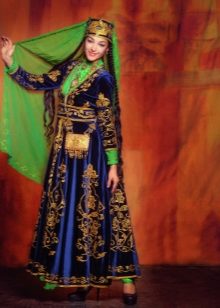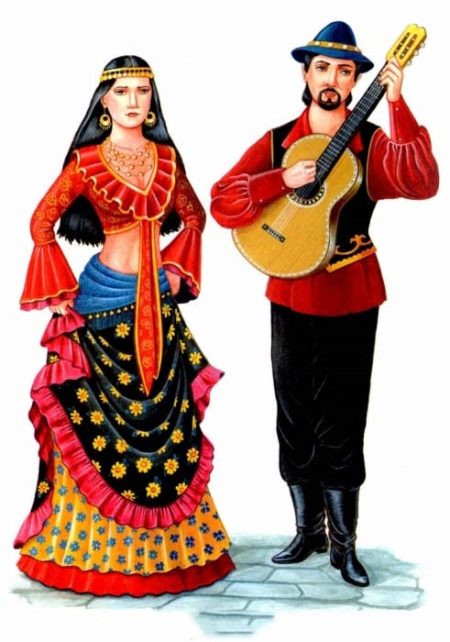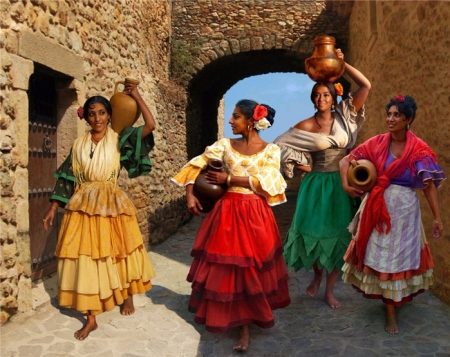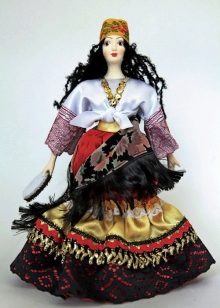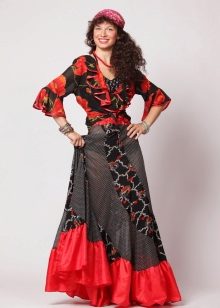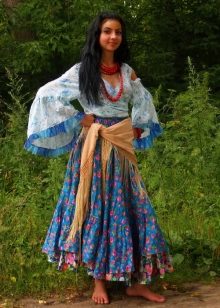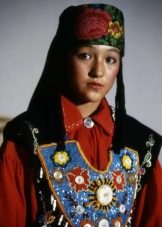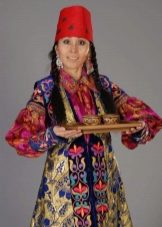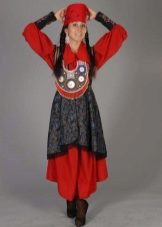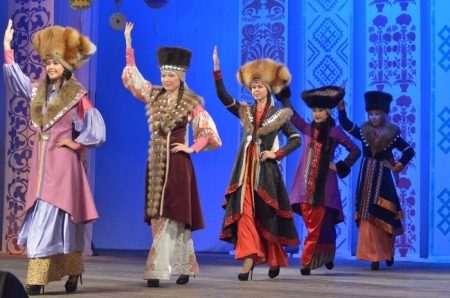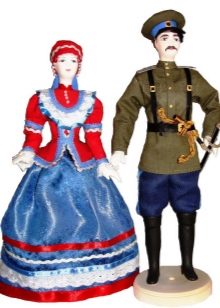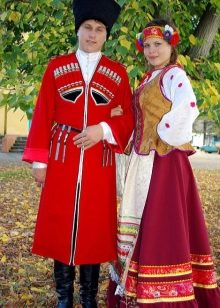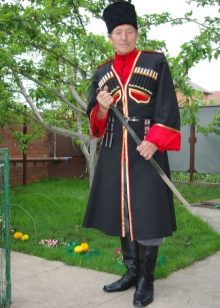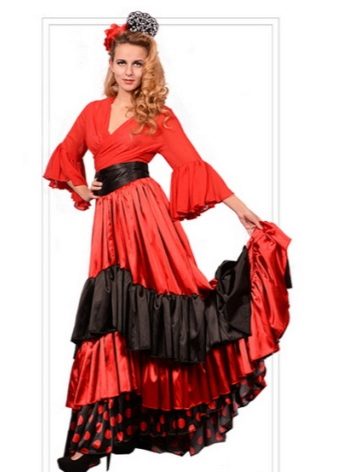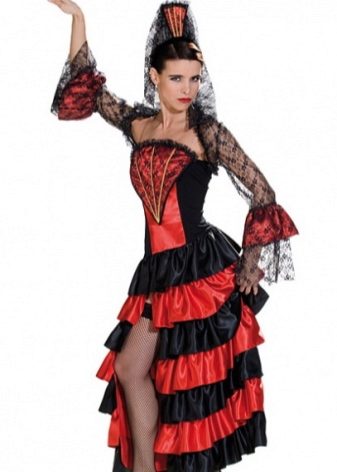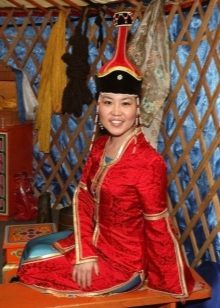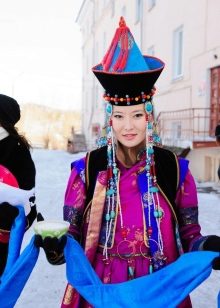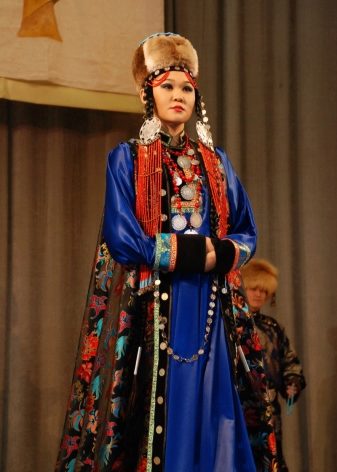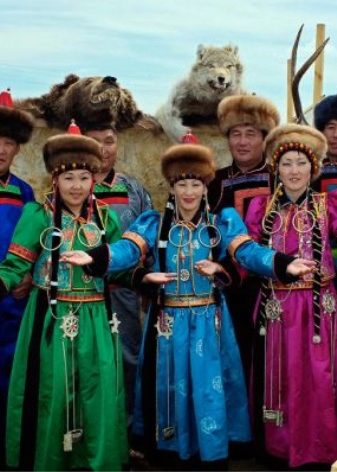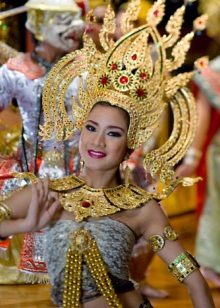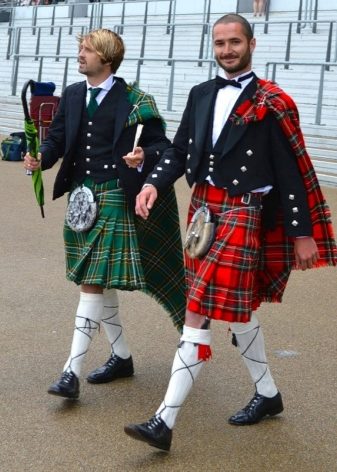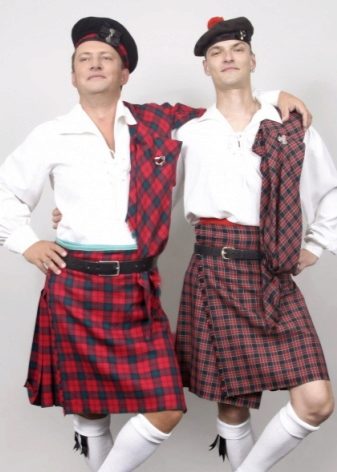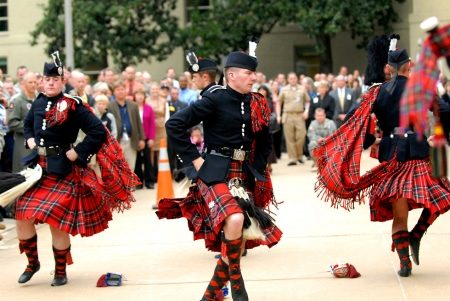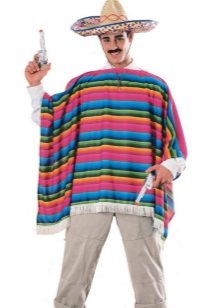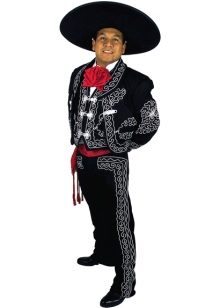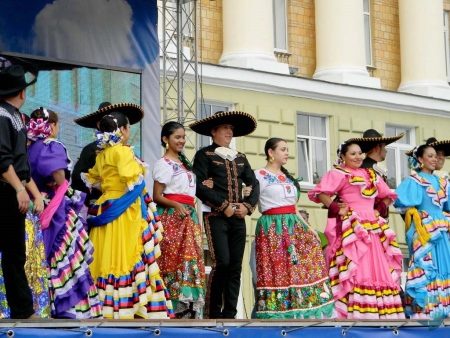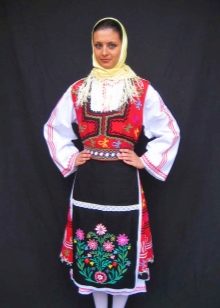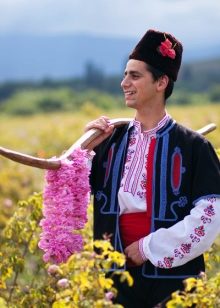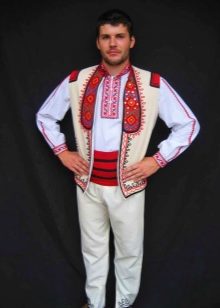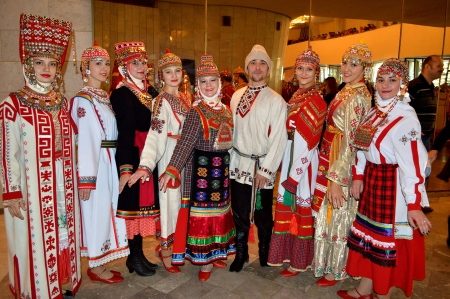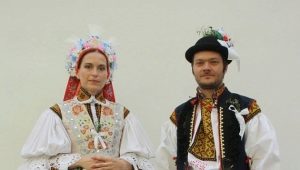National costumes of the world
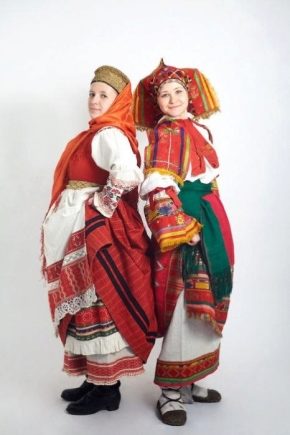
A national costume for any nation is the embodiment of all its features, culture and traditions. Each nation boasts special clothing that stores a piece of the past and allows you to maintain a national identity. About these costumes today and will be discussed.
Purpose
Traditional clothing is not only a way to protect oneself from the cold, but also an opportunity to show one’s identity to a particular culture. National clothes were previously very clearly divided into casual and festive. In addition, for certain details of the national costume it was possible to judge which class the person belongs to.
Features of folk costumes of the world
Kyrgyz
First of all, it is worth noting that Kyrgyz clothing was initially distinguished by convenience. These people are accustomed to nomadic life and horse riding. Therefore, their outfits were best suited for regular rides on horseback.
The traditional Kyrgyz costume was created from animal skins and coarse wool fabric. Simple long cloaks were sewn from such durable materials. Their floors were plowed if necessary, and the belt was tied with a leather belt. National Kyrgyz clothes are wide and comfortable, with a minimum amount of decor.
Kalmyk
National clothes of Kalmyks are warm, and dresses are multi-layered. Lightweight undergarments — a shirt and pants — were made of fine cotton, cloth, or nankeys, depending on the well-being of the family. Outerwear was more dense, of skins or felt. It was decorated with furs, and rich people also used embroidered stripes as decor.
Georgia Costume
The national costume of Georgia among other traditional costumes highlights the abundance of decor. Outfits for Georgian women consisted of a carrot (long fitted dress) and a belt, which was necessarily decorated with embroidery or pearls.
For men, typical clothes were trousers and a shirt, complemented by Circassian. In such a dress, the figure of a man seemed more slender and taut due to the narrow waist, accentuated belt and wide shoulders.
Serbian
National Serbian clothing is simple. The main material for sewing traditional outfits has always been a thin canvas. Linen clothing sewn for adults and children. Wore it at any time of the year. True, in winter the outfits were complemented with a woolen skirt and warm pregs. Fur sleeveless jackets or thick leather capes were used as outerwear.
Adygei
A characteristic feature of the Adygei costumes are loose capes, resembling bathrobes with wide floors. These capes were fastened with silver buttons. Complement the image of comfortable trousers, which were refueled in the legs.
From above, the Circassians laid a felt felt cloak on the shoulder. It was worn so that the right hand remained free all the time. It was convenient, first of all, for male warriors, as well as the mail they wore under the burka.
Another characteristic feature of the Adyghe folk costume is a high felt hat. Men wore it, while women tried to choose a more elegant headdress, for example, a pointed cap decorated with a shishak. They also, if possible, richly decorated their outfit with rings, earrings, bracelets and other decorative elements.
Finnish
The traditional Finnish costume is distinguished by cold colors, simple ethnic patterns and special elegance.Women's national outfit is a combination of a long skirt, decorated with an apron, bodice-sleeveless jacket, worn over the blouse, jacket and shoes with socks. Young girls could do without hats, but married women were supposed to wear a neat lace cap, going outside.
English
Unlike the Scots and the Irish, the inhabitants of Foggy Albion do not have characteristic clothes that could be called a national costume. But there are certain things that are typical representatives of certain professions, characteristic only for England. For example, the guards of the famous Tower wear scarlet camisoles, embroidered in gold. As a headdress used high checker, decorated with black fur.
Ingush
Among the national Ingush costumes it is worth highlighting festive dresses for girls. They were sewn from expensive plain fabrics and, if possible, were decorated with lace, pearls and gold or silver embroidery. Another characteristic feature is the “kurkhas”, an old headdress that complements the traditional fancy costumes.
Tajik
Folk Tajik costume is ideal for residents of the highlands. Its characteristic features are loose shirts, trousers and a warm robe, complemented by a belt scarf. The Tajiks traditionally used skullcaps as headwear.
Women's outfits also consisted of an elongated shirt and a warm top. Talented needlewomen additionally decorated their shirt with original embroidery.
Gypsy
Since Gypsies are from India, their outfits clearly show the similarity with colorful Indian outfits. Gypsy people are nomads, therefore each group, stopping in the territory of a particular country, absorbed the characteristic features of their national costume into their attire.
But all the gypsy outfits combined certain features. So, among the Gypsy people there is a taboo system called pekalimos. It implies an open top and a closed bottom. The fact is that according to the beliefs of the Gypsy, the lower part of the female body is unclean, so it must be hidden by a long skirt. As for the top, it may well be open and supplemented with a deep neckline.
Over the long colorful skirt girls always wore an apron. It was believed that it is an additional shield that protects the body of a woman from the eyes of others and touches.
Khakassky
Khakass costumes are also quite distinctive. Men wore a shirt and thick plain pants, women wore the most closed dress. Women's attire was supposed to hide from prying eyes the whole body, except for the hands and neck.
Particularly noteworthy are festive national costumes. They were made of expensive materials: silk, black velvet and fur. Such costumes gave the uniqueness of the ornament. Most often on the surface of the dresses embroidered elegant floral patterns.
Kazakov
Cossacks were warriors and horsemen. Therefore, their clothes were designed for riding. Free trousers did not hold down movements and allowed to move freely on a horse. The top, on the contrary, was as tight as possible. A short overcoat protected from the cold, but did not interfere with either the jump or the participation in a foot battle. For more convenience, it is additionally tied up with a belt or a wide sash.
Spanish
One of the most spectacular national costumes is Spanish. Dresses for women in Spain differed openness and emphasized sexuality. Women's costume consisted of a wide skirt of a bright color, a corset and a blouse with an open neckline, and sometimes bare hands.
The most characteristic element of the dress is a colorful multi-layered skirt, which was worn both in everyday life and for holidays. The most spectacular headdress was and is mantilla. Now this lace cape, worn over a high ridge, is sometimes used to create wedding images in a folk style.
Buryat
You can not ignore the national costume of Buryatia. Buryat outfits are diverse: for each age and class there were their own particular details of the costume. So, girls under 14 years old wore terligi - long-field cloth dressing gowns, complemented by a wide sash. Older girls were dressed up in a shorter dress, complemented by a colorful decorative belt.
For married women were characterized by dresses with lush puffs and fur trim. Rich ladies preferred outfits made of more expensive fabrics - cloth or shiny satin. They were decorated with the fur of rare animals.
Thailand costume
Costumes of Thai people are lighter and brighter. This is due to the peculiarities of the country in which they live. Another characteristic feature of this sunny country outfits is the abundance of jewelry. From the age of five, girls wear rings around their neck and wrists, the number of which increases over time. This, according to their beliefs, is the standard of beauty.
Scottish
Scottish folk costumes are known throughout the world for such a characteristic feature as a kilt. This piece of wardrobe, reminiscent of a simple skirt, is part of the outfit for men and women.
A kilt is sewn from tartan. This is a dense woolen fabric with a distinctive plaid print. It is also worth noting that each clan and region had its own pattern, differing in cell size and color combination. The top of the national costume of Scotland is monophonic, complemented by a black vest.
Mexican
The costume of Mexicans is associated by many with a sombrero - wide-brimmed hat. But in addition to this headdress, the national Mexican clothing also includes a wide cotton shirt and plain trousers.
Women's version of the national costume is not much different from the male. It consists of the same blouse, complemented by a monochromatic long skirt. An integral part of the Mexican national costume is a colorful shawl that women use as a cape, as a headdress, and even as a sling in which you can wear a newborn baby.
Bulgarian
National Bulgarian costumes are traditionally divided into “black spring” and “white curry”. The first version of clothing was carried out in dark colors, the second - in light. Light suits were worn on holidays, and darker suits were meant for everyday wear. Bulgarians decorated the shirt and vest with embroidery.
Women usually wore long sundresses, complemented by a painted apron. And men combined his shirt and vest with pants. By how wide pants, it was possible to assess the welfare of men. The wider the lower part of the suit, the richer the Bulgarian.
National costumes of the world are as diverse and unlike each other as the people themselves who inhabit the territories of different countries. Now traditional costumes are worn only on special occasions, and some of their elements are used in the creation of modern outfits for women and men. Such an attitude to national clothing allows you to maintain a sense of belonging to a particular culture and the memory of the rich past of your country.
